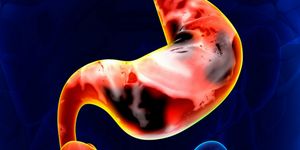Can Lining Chemical may be Disrupting Intestinal Function
Our digestive system has a complex relationship with our health. Intestinal cells form an important barrier that has to let nutrients in and keep harmful substances out, among other important functions. New research by scientists at Binghamton University has found that food packaging might cause dysfunction in the digestive tract.
There seem to be chemical particles in the lining of canned foods that are altering cellular activity or nutrient uptake in the intestine. “We found that zinc oxide (ZnO) nanoparticles at doses that are relevant to what you might normally eat in a meal or a day can change the way that your intestine absorbs nutrients or your intestinal cell gene and protein expression," explained Gretchen Mahler, associate professor of bioengineering.
Mahler said that the ZnO nanoparticles in can linings are used to deter microbial growth and staining in foods that produce sulfur. The researchers studied cans of tuna, chicken, asparagus, and corn with mass spectrometry to assess how many nanoparticles leech into the food. The food was found to carry one hundred times the daily recommended allowance of zinc. Next, the scientists studied how the nanoparticles influenced the digestive tract.
"People have looked at the effects of nanoparticles on intestinal cells before, but they tend to work with really high doses and look for obvious toxicity, like cell death," said Mahler. "We are looking at cell function, which is a much more subtle effect, and looking at nanoparticle doses that are closer to what you might really be exposed to."
"They tend to settle onto the cells representing the gastrointestinal tract and cause remodeling or loss of the microvilli, which are tiny projections on the surface of the intestinal absorptive cells that help to increase the surface area available for absorption," said Mahler. "This loss of surface area tends to result in a decrease in nutrient absorption. Some of the nanoparticles also cause pro-inflammatory signaling at high doses, and this can increase the permeability of the intestinal model. An increase in intestinal permeability is not a good thing -- it means that compounds that are not supposed to pass through into the bloodstream might be able to."
While Mahler investigated these effects experimentally, she is still not sure of the ultimate health impacts.
"It is difficult to say what the long-term effects of nanoparticle ingestion are on human health, especially based on results from a cell culture model," continued Mahler. "What I can say is that our model shows that the nanoparticles do have effects on our in vitro model, and that understanding how they affect gut function is an important area of study for consumer safety."
Now the investigators are assessing the effect of nanoparticle ingestion on an animal model. "We have seen that our cell culture results are similar to results found in animals and that the gut microbial populations are affected. Future work will focus on these food additive-gut microbiome interactions," concluded Mahler.
Sources: AAAS/Eurekalert! Via Binghampton University, Food & Function









